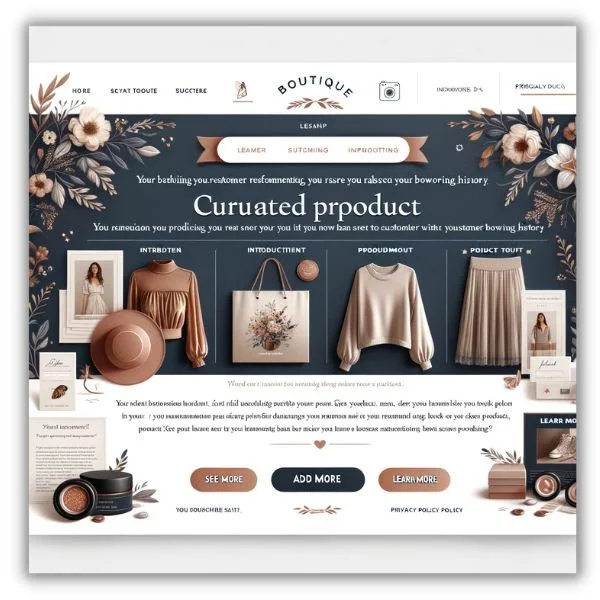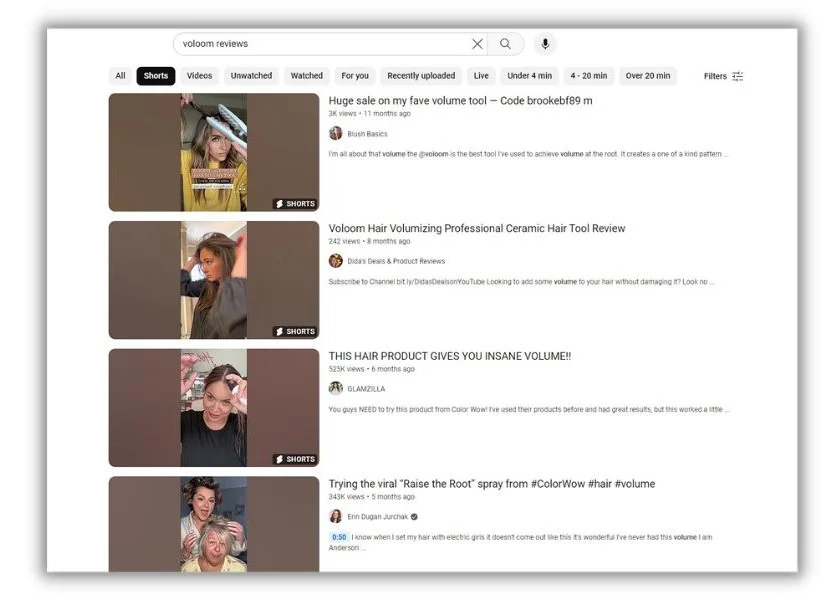More than 4 billion people on this planet are active email users, and most check their emails several times a day using multiple devices. Add email’s incredible ROI of $36 per dollar spent, and it’s clear why staying on top of email marketing trends is so important.
In this article, we’ll reveal the nine biggest email marketing trends to know in 2024, plus show you three upcoming trends we’re keeping an eye on.
👋 Pssst…this free guide to small business emails is full of copy-and-paste templates, subject line ideas, and tips to get more sales from your emails.
9 email marketing trends for 2024
Thanks to new technology and quickly changing user expectations, the following trends will be the biggest of 2024.
1. AI-powered email marketing
AI-powered email marketing will gain significant popularity in 2024 due to its ability to personalize content at scale and optimize campaign performance.
Recent advancements in AI technology made it more accessible and cost-effective. That’s why in 2024, email marketers will use it to create subject lines, messaging, and even visual templates. In fact, 88% of marketers believe they must increase the use of AI and automation to stay competitive and meet customer expectations.
AI in email marketing can be used to:
- Personalize content creation.
- Perform predictive analytics for optimal send times, designs, messaging, and subject lines.
- Create customer segmentation.
AI systems can analyze user behavior and engagement data to tailor content, making each email more relevant to the recipient. To leverage AI in your email marketing:
- Start by integrating AI-powered tools with your existing email platform.
- Use AI for segmenting your email list based on customer behavior and preferences.
- Experiment with AI-generated subject lines and content for higher engagement.
- Continuously analyze the performance data to refine your approach and improve customer engagement.
Here’s what happened when we asked ChatGPT (4.0) to build an email template using this prompt: “Design an email template, in image form, for a boutique online store recommending products based on customer browsing history.”

You can further refine these templates by integrating your email marketing tool with AI and/or trying a different prompt. For people not savvy in design, this will be a game changer.
2. Hyper-personalization
Hyper-personalization continues to be an important component of a successful email marketing strategy. More than 56% of customers say that they would buy multiple times from a brand after a personalized experience. This is a 7% increase from 2022 and indicates a clear shift in consumer expectations towards more tailored interactions.
Hyper-personalization goes beyond basic tactics like using the recipient’s name in the email. It involves using data analytics to understand individual customer preferences, behaviors, and interests, and then creating highly targeted and relevant content for each subscriber.
This approach includes personalized product recommendations, content tailored to the customer’s purchase history, or customized promotional offers.
Consider this example by Care/of, a subscription service that offers daily vitamins to its customers based on each customer’s unique individual needs.

The company asks customers to take a detailed quiz covering their lifestyle, aspirations, and health goals. Based on the responses, Care/of provides a personalized list of daily vitamins and water-soluble supplements.
This level of personalization extends to detailed explanations for each product recommendation, allowing customers to make informed choices about their purchase.
This hyper-personalized approach results in a higher level of customer trust, leading to increased conversion rates. You can implement this approach in your email marketing campaigns by:
- Collecting and analyzing customer data to understand individual preferences and behaviors.
- Using email marketing tools that allow for dynamic content creation based on customer data. This way you can automate campaigns that change visual elements and messaging based on customer type.
3. Interactive email elements
The use of interactive elements in email marketing is nothing new, but it will surge in popularity in 2024 due to its ability to significantly boost user engagement as well as all the fun new elements that can now work right out of the inbox.
Interactive email elements, like embedded videos, image carousels, quizzes, polls, and surveys work directly within the email. These elements transform static emails into engaging experiences, encouraging recipients to interact more deeply with the content, leading to increased engagement and time spent on the email.
For example, email marketing platform Mailmodo gives their customers the option to embed a spin-the-wheel widget in the email. This widget can be used to offer gifts, discounts, or simply gamify the customer’s experience.

To integrate interactive elements into your emails:
- Identify which interactive elements align best with your brand and campaign goals. Spin the wheel might work for some businesses while others may benefit from quizzes, webinars, or even calculators in their emails.
- Use email marketing tools that support these interactive features.
- Test and optimize these elements for different devices to ensure a seamless user experience.
- Analyze engagement metrics to understand the effectiveness of these features and refine your strategy accordingly.
4. Advanced email automation
Advanced email automation involves using sophisticated software tools to automate complex and personalized email campaigns. This includes trigger-based emails tailored to individual customer actions, automated customer journey workflows, and segmentation based on real-time data. The goal is to deliver timely and relevant content to each subscriber without manual intervention.
Emails triggered by customer actions only account for 1.8% of total emails sent, but they make for about 32% of email sales. To tap into the power of advanced email automation:
- Identify key customer behaviors (such as cart abandonment, the customer searching for a specific product etc.) that should trigger automated emails.
- Use segmentation to tailor your automated emails to different audience groups.
- Continually test and refine your automated campaigns based on performance data.
5. Increased use of visuals and video content
The trend towards more visuals and video content in email marketing will grow due to the high engagement and information retention rates associated with visual media.
High-quality images, infographics, GIFs, and embedded videos can explain products, showcase services, tell brand stories, and provide tutorials, making emails more dynamic and interactive.
For example, small fitness studios can send short workout videos in their weekly newsletters. These videos can then contribute to a higher attendance rate in their online classes. Hitchfit, an online fitness brand, uses the same strategy.

To effectively use visuals and video content in your emails:
- Make sure that visuals are high quality, relevant, and align with your brand message.
- Use video hosting platforms (YouTube, Vimeo, Loom) that allow for easy embedding in emails.
- Optimize image and video sizes for quick loading, especially for mobile users.
- Include alt text for images and accessible descriptions for videos.
6. Enhanced privacy and data security practices
In email marketing, there is an increased emphasis on enhanced privacy and data security. 87% of customers care about their data and want more control over it, and 81% will even switch to a competitor if that means more data privacy.
Enhanced privacy and data security practices in email marketing involve implementing robust measures to protect customer data and ensuring compliance with data protection laws. This includes secure data collection, storage, and processing practices, transparent privacy policies, and explicit consent mechanisms for subscribers.
To enhance privacy and data security in your email marketing:
- Regularly update and communicate your privacy policy to subscribers.
- Get explicit and informed consent for data collection and use through dedicated emails and landing pages.
- Invest in secure data storage and processing systems.
- Stay updated with the latest data protection regulations and compliance requirements.
🛑 Do you have a marketing roadmap for this year? It’s okay, just download this small business marketing plan and template and you’re on the way!
7. Focus on mobile-first email design
Roughly half of all emails that are opened are opened via smartphones. As people spend five to six hours on their phones every day, and use them to check their emails daily, businesses need to prioritize mobile-friendly designs.
Mobile-first design means creating emails that are optimized for viewing on mobile devices first, before desktops. This includes responsive design, easily clickable buttons, and concise content that fits small screens.
To create mobile-first email designs:
- Use responsive email templates that adapt to various screen sizes.
- Test your emails on multiple devices to ensure compatibility.
- Keep content concise and easily scrollable on mobile devices.
- Use large, easily tappable call-to-action buttons.
8. More utilization of user-generated content (UGC)
UGC in emails will continue to be popular as it builds trust and authenticity. That’s because 78% of customers know when they are being advertised to, and 72% believe that UGC is more credible than brands talking about their own products.
UGC is content created by customers, such as reviews, photos, or videos. Using this content in email campaigns adds authenticity and relatability to the brand’s messaging.
For example, Voloom, known for its hair-volumizing products, has a wealth of user reviews, before-and-after photos, and testimonials online.

Using this content in their emails helps them earn their customers’ trust more effectively as compared to conventional emails that only promote their products.
To use UGC for email marketing:
- Encourage customers to share their experiences and tag your brand.
- Use UGC to showcase real-life applications of your products or services.
9. Further adoption of multichannel marketing approaches
Multichannel marketing will continue to be vital in 2024, as businesses that adopt multichannel strategies achieve up to 89% customer retention.
Multichannel marketing integrates multiple communication channels to provide a seamless customer experience. It involves coordinating email marketing with other channels like social media, mobile apps, and websites.
Think of a small company in the home services space. When going up against bigger competitors on email, the odds will always be against them thanks to the bigger company’s advertising budget and presumably bigger database of email subscribers.
But, by using a mix of direct mail, email marketing, social media, and online display advertising, a smaller company can also get more leads and achieve greater customer engagement.
To complement your email marketing campaigns with multichannel marketing:
- Integrate your email marketing with social media and other digital platforms.
- Make sure there’s consistent messaging across all channels.
- Use customer data to personalize communications on every channel.
Even more email marketing trends to watch for in 2024
As we look towards 2024, the email marketing landscape continues to evolve with the emergence of new technologies and innovations. While the trends of AI-powered marketing, hyper-personalization, and interactive elements are becoming more prevalent, there are several cutting-edge developments that are poised to further revolutionize this domain.
Blockchain for email marketing
Blockchain promises to introduce a new level of security and transparency in subscriber management. By using blockchain, marketers can ensure that their email lists are secure and that subscriber preferences are accurately and transparently managed. The technology can help address the growing need for data privacy and better security practices, as it offers a tamper-proof record of subscriber consent and preferences.
Virtual and augmented reality in emails
Virtual reality (VR) and augmented reality (AR) elements in email marketing can be used to completely transform user experience. Imagine receiving an email from an online store where you can virtually try on clothes or view products in a 360-degree format right within your inbox. This level of interactivity could significantly enhance customer engagement and provide an immersive shopping experience.
Advanced neural networks for creative content
With AI’s role in email marketing already established, the next step is the use of advanced neural networks. These could be employed to generate highly creative and engaging content, taking personalization to new heights. AI’s ability to analyze user behavior and preferences could be combined with neural networks to create content that resonates deeply with each recipient, thereby boosting engagement rates significantly.
Embracing these developments while addressing their challenges and integrating them with existing trends like AI-powered marketing and hyper-personalization will be key to crafting successful, future-proof email marketing strategies.
Lean into email marketing trends for growth in 2024
Email remains one of the (maybe the) best marketing channels for growing a business. Not only does it deliver a high return on your investment, but it’s also an owned channel that isn’t subject to the algorithmic whims of search engines or social media platforms.
To get the most out of your email marketing in 2024, stay tuned to these trends:
- AI-powered email marketing
- Hyper-personalization
- Interactive email elements
- Advanced email automation
- Increased use of visuals and video content
- Enhanced privacy and data security practices
- Focus on mobile-first email design
- More utilization of user-generated content (UGC)
- Further adoption of multichannel marketing approaches
Want more 2024 marketing trends? We’ve got you covered:
- The Top 2024 Social Media Marketing Trends
- 8 Important Mobile Marketing Trends to Know for 2024
- 7 Must-Know Digital Marketing Trends for 2024
- The 5 Biggest Google Ads Trends for 2024 (+6 Predictions)
- 7 Content Marketing Trends You Need to Know in 2024 (+Tips to Prepare)
- AI Marketing Trends for 2024 & What They Mean for You
- 12 Biggest SEO Trends to Watch in 2024
- 9 Video Marketing Trends to Watch in 2024






